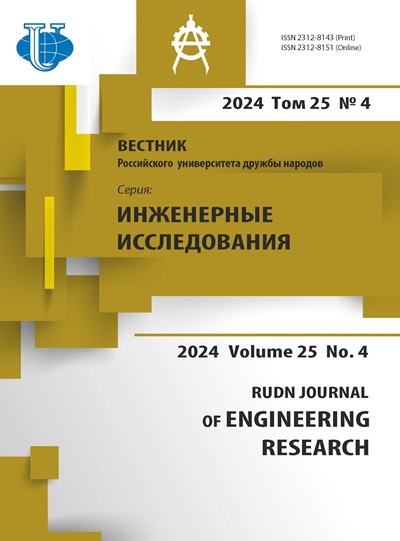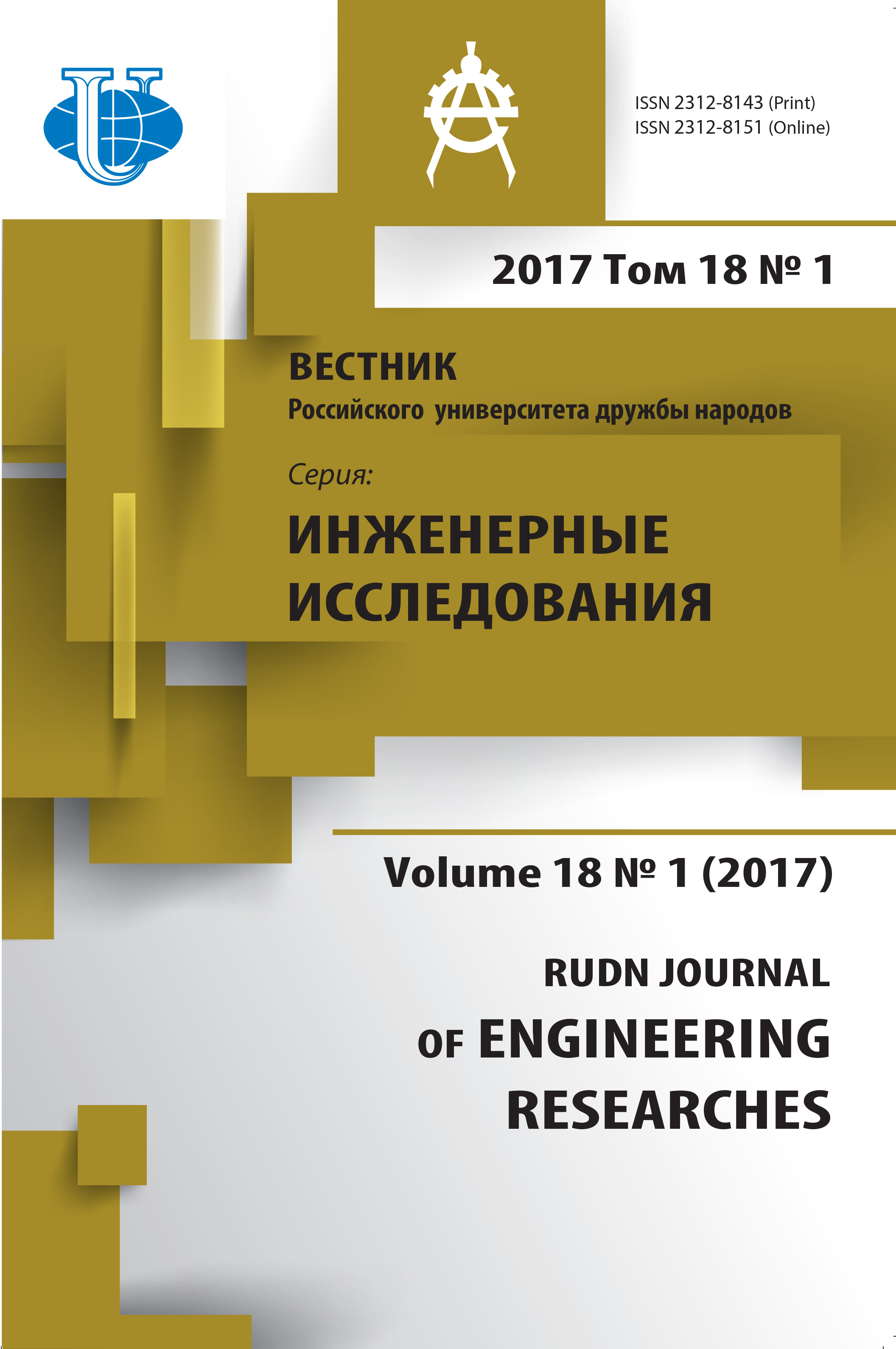REINFORCED GYPSUM-POLYSTYRENE CONCRETE MIX AS THE THERMAL INSULATION OF PIPELINES IN THE HEATING STATION
- Authors: Svintsov A.P1, Gusamov M.T1, Shumilin E.E1
-
Affiliations:
- Engineering Academy Peoples’ Friendship University of Russia
- Issue: Vol 18, No 1 (2017)
- Pages: 29-39
- Section: Architecture and civil engineering
- URL: https://journals.rudn.ru/engineering-researches/article/view/15997
- DOI: https://doi.org/10.22363/2312-8143-2017-18-1-29-39
Cite item
Full Text
Abstract
Results comparison of efficiency of thermal protection of basalt fibers and gypsum polystyrene concrete. The thermal efficiency of the piping of the heating system depends on the thermal insulation. Effective heat protection to create the conditions to reduce losses of heat for heating of buildings.Thermal efficiency of protection depends on the physical properties of the material and the thickness of the insulation layer. The optimum thickness of thermal insulation is an important element in the rational use of materials and thermal energy.Thermal protection must ensure the surface of the insulation temperature of not more than 45 °C if the coolant temperature is over 100 °C. Thermal protection must ensure the surface of the insulation temperature of not more than 35 °C if the coolant has a temperature below 100 °C.Heat insulating material based on gypsum polystyrene concrete created at the RUDN University. Crushed or granulated polystyrene can be used for the production of this material. The material has a density of 300 kg/m3. Strength under axial compression is an average of 0.6 MPa. Coefficient of thermal conductivity equal to an average of 0,074 W/(m °C).Calculation and comparison of the effectiveness and cost of the thermal protection of various materials are presented. This material is more than six times less thermal insulation made of basalt fiber.The use of plaster polystyrene for thermal insulation of pipelines and equipment of calorific points to successfully solve the problem of decrease in losses of heat at operation of heating systems.
Keywords
About the authors
Alexander P Svintsov
Engineering Academy Peoples’ Friendship University of Russia
Author for correspondence.
Email: svintsovap@rambler.ru
Professor, DSc, Professor of the Department of Architecture & Civil Engineering
Miklukho-Maklaya str., 6, Moscow, Russia, 117198Marat T Gusamov
Engineering Academy Peoples’ Friendship University of Russia
Email: gmt94@mail.ru
graduate student of the Department of Architecture & Civil Engineering
Miklukho-Maklaya str., 6, Moscow, Russia, 117198Egor E Shumilin
Engineering Academy Peoples’ Friendship University of Russia
Email: svintsovap@rambler.ru
graduate student of the Department of Architecture & Civil Engineering
Miklukho-Maklaya str., 6, Moscow, Russia, 117198References
- Birjuzova E.A. Povyshenie jenergojeffektivnosti teplovyh setej za schet primenenija sovremennyh teploizoljacionnyh materialov [Improvement of heat supply networks energy efficiency using modern insulation materials]. Regional’naja arhitektura i stroitel’stvo [Regional architecture and engineering]. 2013, no. 1. Pp. 62—66.
- Valitov Sh.M. Innovacii v jenegosberezhenii [Innovations in energosberezhenii]. Intellekt. Innovacii [Intelligence. Innovation]. 2014, no. 4. Pp. 27—30.
- Vytchikov Ju.S., Evseev L.D., Chulkov A.A. Povyshenie jeffektivnosti i dolgovechnosti teplovoj izoljacii truboprovodov sistem teplosnabzhenija s primeneniem skorlup iz ponopoliuretana [Improving the efficiency and durability of thermal insulation of pipelines of heat supply systems with application of shells from penopoliuretana]. Gradostroitel’stvo i arhitektura [Urban planning and architecture]. 2013, no. 2 (10). Pp. 90—93.
- Galkin S., Zapasnyj V. Predposylki proektirovanija optimal’noj teplovoj izoljacii oborudovanija i truboprovodov [The prerequisites for the design of optimal thermal insulation of equipment and pipelines]. Nauka, novye tehnologii i innovacii [Science, new technologies and innovations]. 2009, no. 4. Pp. 16–18.
- Degtjareva E.O. Optimizacija tolshhiny teplovoj izoljacii obogrevaemyh truboprovodov [Optimization of thickness of thermal insulation of a heated piping]. Promyshlennyj jelektroobogrev i jelektrootoplenie [Industrial electric heat tracing and heating]. 2012, no. 1. Pp. 42—47.
- Eremeev V.E. K voprosu rascheta tolshhiny teplovoj izoljacii po zadannoj velichine snizhenija (povyshenija) temperatury veshhestva transportiruemogo truboprovodami [To the question of the calculation of thickness of thermal insulation for a given value of reducing (increasing) the temperature of the material transported by the pipelines]. Truboprovodnyj transport: teorija i praktika [Pipeline transport: theory and practice]. 2011, no. 3. Pp. 52—54.
- Zajceva A.A., Zajceva E.I., Korovjakov V.F. Povyshenie jenergojeffektivnosti za schet teplovoj izoljacii truboprovodov [Energy efficiency through thermal insulation of pipelines]. Stroitel’nye materialy [Building materials]. 2015, no. 6. Pp. 42—44.
- Karpov D.F., Pavlov M.V., Sinicyn A.A., Kaljagin Ju.A., Mnushkin N.V. Opredelenie kojefficienta teploprovodnosti teplovoj izoljacii na uchastke truboprovoda sistemy centralizovannogo teplosnabzhenija [Determination of the coefficient of thermal conductivity of thermal insulation on the pipeline of the district heating system]. Mehanizacija stroitel’stva [Mechanization of construction]. 2014, no. 9 (843). Pp. 30—34.
- Koroli M.A. Povyshenie jeffektivnosti teplovoj izoljacii truboprovodov teplovyh setej na osnove teploizoljacionnyh materialov mestnogo proizvodstva [Improving the efficiency of thermal insulation of pipelines of heat networks on the basis of thermal insulating materials from local production]. Nauchnye itogi goda: dostizhenija, proekty, gipotezy [The scientific results of the year: achievements, projects, hypothesis]. 2015, no. 5. Pp. 143—148.
- Kravchenko G.M. Sravnitel’nyj raschet tolshhiny teploizoljacionnogo sloja [Comparative calculation of the thickness of the insulating layer]. Izvestija Rostovskogo gosudarstvennogo stroitel’nogo universiteta [Proceedings of Rostov state construction University]. 2012, no. 16. Pp. 52—54.
- Kuznecov G.V., Ozerova I.P., Polovnikov V.Ju., Cygankova Ju.S. Ocenka fakticheskih poter’ tepla pri transportirovke teplonositelja s uchetom tehnicheskogo sostojanija i real’nyh uslovij jekspluatacii teplovyh setej [Assessment of the actual heat losses during transportation carrier subject to the technical condition and the real operation conditions of heat networks]. Izvestija Tomskogo politehnicheskogo universiteta. Inzhiniring georesursov [Bulletin of the Tomsk Polytechnic University. Engineering of georesources]. 2011, v. 319, no. 4. Pp. 56—60.
- Kuznecov Ju.S., Kalashnikov V.I. Teplovaja izoljacija kak osnova jenergosberezhenija [Thermal insulation as the basis of energy saving]. Vestnik Volzhskogo regional’nogo otdelenija Rossijskoj akademii arhitektury i stroitel’nyh nauk [Bulletin of the Volga regional branch of the Russian Academy of architecture and construction Sciences]. 2011. no. 14. Pp. 88—91.
- Lebedeva E.A., Kocheva M.A., Kol’chatov E.Ju., Gudkov S.A. Jenergosberegajushhie tehnologii pri jekspluatacii TJeCi teplovyh setej [Energy saving technologies during operation of the HEE and thermal networks]. Privolzhskij nauchnyj zhurnal [The Privolzhsky scientific journal]. 2013, no. 4 (28). Pp. 68—72.
- Muranova M.M., Shhjolokov A.I. Primenenie sovremennoj teplovoj izolcii dlja truboprovodov. Sloistaja teploizoljacija [Application of modern thermal salcii for pipelines. Layered insulation]. Vestnik Samarskogo gosudarstvennogo tehnicheskogo universiteta. Serija: Tehnicheskie nauki [Vestnik of Samara state technical University. Series: Technical Sciences]. 2012, no. 2 (34). Pp. 165—169.
- Patent 2577348 Rossijskaja Federacija, MPK S04V 38/08, S04V 28/04, S04V 28/14, S04V 28/16, S04V 111/20. Armirovannaja gipsopolistirolbetonnaja smes’ [Reinforced gypsum polystyrene concrete mix]. A.P. Svintsov, Masri Gazi Haled Sarib, L.G. Kalashnikova, N.A. Egorova. № 2014148875/03; zajavl. 04.12.2014; opubl. 20.03.2016; Bul. № 8. 11 p.
- Petrikeeva N.A., Cheremisin A.V., Kopytin A.V. Zadacha tehnikojekonomicheskoj optimizacii pri opredelenii tolshhiny teploizoljacionnogo sloja teplosetej [Objective technical and economic optimization when determining the thickness of the insulating layer of the heating]. Nauchnyj vestnik Voronezhskogo gosudarstvennogo arhitekturnostroitel’nogo universiteta. Stroitel’stvo i arhitektura [Scientific Herald of the Voronezh state University of architecture and construction. Construction and architecture]. 2016, no. 1 (41). Pp. 21—28.
- Smetanina M.O., Zhirgalova T.B. Metody jenergosberezhenija pri proektirovanii teplovyh setej [Energy saving techniques in the design of thermal networks]. Jenergo i resursosberezhenie v teplojenergetike i social’noj sfere: materialy Mezhdunarodnoj nauchnotehnicheskoj konferencii studentov, aspirantov, uchenyh [Energy and resource saving in heat power engineering and the social sector: materials of International scientifictechnical conference of students, postgraduates, scientists]. 2014, v. 2, no. 1. Pp. 285—292.
- Tolstova Ju.I. Proektirovanie teplovoj izoljacii truboprovodov sistem teplosnabzhenija [Design of thermal insulation of pipelines of heating systems]. Santehnika, otoplenie, kondicionirovanie [Plumbing, heating, air conditioning]. 2014, no. 1 (145). Pp. 56—57.
- Shojhet B.M. Proektirovanie teplovoj izoljacii truboprovodov teplovyh setej [Design of thermal insulation of pipelines of heat networks]. Jenergosberezhenie [Energy saving]. 2015, no. 1. Pp. 50—57.
















